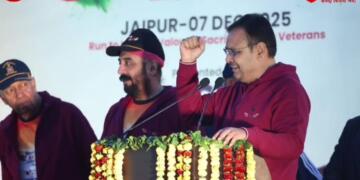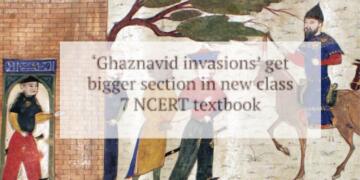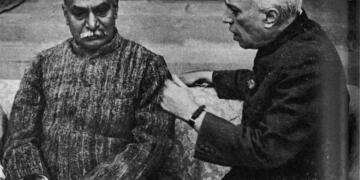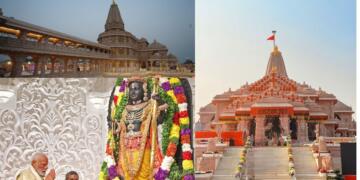Have you ever seen gods take to the streets in chariots pulled by thousands of hands?
In the sacred coastal town of Puri, Odisha, stands a temple so ancient and revered that millions of pilgrims yearn for just a glimpse of the deity housed within. This is the abode of Lord Jagannath- a form of Lord Vishnu, and his divine siblings, Lord Balabhadra and Goddess Subhadra. Worship here follows deep-rooted customs, echoing centuries of devotion and tradition. Each year in Puri, something extraordinary unfolds- a spectacle so grand, ancient, and mysterious that it draws millions from across the world. It’s not just a religious ritual- it’s a celebration, a pilgrimage, and a spiritual phenomenon rolled into one. This is the Jagannath Rath Yatra.
Why do the gods leave their temple? Why are non- Hindus not allowed inside the premises of the temple but allowed to join the procession with such reverence?
Let’s explore the fascinating journey of the Rath Yatra- a festival that turns devotion into a moving celebration of unity, faith, and divine mystery.
Unlike many Hindu deities, the idols of Lord Jagannath and his siblings are made of sacred neem wood and are periodically replaced in a rare and solemn ritual known as Nabakalebara (literally meaning ‘new body’), which takes place every 12 to 19 years. During this ritual, the old wooden idols are respectfully buried, and new ones are carved from carefully chosen neem trees, handpicked through an elaborate spiritual process.
Daily worship at the Jagannath Temple is both simple and profound. The deities are offered Mahaprasad, a sanctified meal cooked without onion or garlic, in traditional earthen pots. This food is first offered to Lord Jagannath and then distributed to thousands of devotees as prasad, creating a powerful spiritual connection through nourishment and community.
A City Reimagined for Pilgrims
In a bold move to reinforce Puri’s identity as a spiritual destination and uphold the sanctity of the Jagannath Temple, the Odisha government has recently announced a ban on alcohol sales and non-vegetarian food in the vicinity of the shrine.
Under the new policy, alcohol sales will be prohibited within a 2-kilometer radius of the 12th-century temple. Additionally, non-vegetarian food stalls along the 3-kilometer-long Grand Road (Bada Danda), the ceremonial path of the Rath Yatra will be required to shut down or relocate.
These measures aim to transform Puri into a dedicated pilgrim city, aligning with its sacred status as one of India’s Char Dham pilgrimage sites. The initiative reflects both a spiritual and civic commitment to preserving the divine ambiance of this holy city.
The Grand Festival: Rath Yatra
The most spectacular expression of devotion arrives each year during the Jagannath Rath Yatra—the Festival of Chariots, one of the grandest religious processions in the world. Held annually in Puri, Odisha, the festival marks the symbolic journey of Lord Jagannath, along with his siblings Balabhadra and Subhadra, from their temple to the Gundicha Temple, considered their aunt’s residence.
This sacred pilgrimage allows the deities to come out of their sanctum, offering darshan to all people including those traditionally barred from temple entry. Non-Hindus are not allowed inside the Jagannath Temple not out of hostility, but as part of an ancient tradition aimed at preserving its ritual sanctity. It’s less about exclusion and more about maintaining a sacred atmosphere governed by centuries-old customs where even the priests follow rules so strict, a single mistake can halt the rituals for days.
In a rare and magnificent display of devotion, the divine descends into the public realm during one of India’s grandest festivals. The streets of Puri overflow with emotion, music, and color as the three colossal, ornately decorated chariots are pulled by millions of devotees, turning the city into a moving temple. The sight of the divine trio rolling through the Grand Road (Bada Danda) is both spiritually electrifying and socially unifying, a true celebration of faith, inclusivity, and divine grace.
The Journey Begins: Preparations and Rituals
The first signs of the coming festival stir in the spring, on Akshaya Tritiya (April 30, 2025), when the construction of the chariots begins. Skilled artisans, working with devotion and precision, craft three majestic wooden chariots, one for each deity using specific sacred woods and traditional techniques handed down through generations.
As the monsoon approaches, on Snana Purnima (June 11, 2025), the holy trinity is brought out for a grand public ritual known as the Snana Yatra. On this day, the idols are ceremoniously bathed with 108 pots of sanctified water drawn from the temple’s golden well. This is the only occasion when the deities are visible together before the Rath Yatra begins.
Following this elaborate bathing, the deities are believed to fall ill and enter a period of seclusion known as Anavasara (June 13–26, 2025). For 15 days, they remain hidden from public view, cared for in isolation, said to be recovering from the ritual.
Naba Jaubana Darshan & Gajavesha
The day before Rath Yatra, on June 26, 2025, marks the Naba Jaubana Darshan- the momentous occasion when the deities reappear to devotees after their period of seclusion, symbolizing youthful rejuvenation. On this day, emotions run high as thousands gather for the first darshan of the restored and radiant deities. The ceremonial cleaning of the Gundicha Temple, known as Gundicha Marjana, also takes place earlier in the day as a spiritual preparation to receive the Lord.
Later in the evening, the deities appear in Gajavesha- elephant attire, a special and visually striking form. This unique dress carries a rich historical and devotional significance. Legend has it that a devotee from Karnataka, an ardent follower of Lord Ganesha, once expressed a heartfelt wish to see Lord Jagannath in the form of Ganesh. Moved by this devotion, the Lord is said to have manifested in the elephant form, symbolizing divine compassion and the acceptance of all forms of love and worship.
The Procession
At last, the long-awaited day arrives- 27 June, 2025, the day of Rath Yatra. A tide of humanity swells in the streets of Puri as the three deities are carried out of the temple in a majestic and emotional ceremony. Drums thunder, conches blow, and chants of devotion fill the air as at least 3–5 priests gently escort each deity out of the sanctum.
Outside, three newly constructed chariots await:
Nandighosha: Lord Jagannath’s chariot, 44.2 feet tall, with 16 wheels.
Taladhwaja: Lord Balabhadra’s chariot, 43.3 feet tall, with 14 wheels.
Darpadalana: Goddess Subhadra’s chariot, 42.3 feet tall, with 12 wheels.
Before the journey begins, the sacred Chhera Panhara ritual takes place. In this act of humility and devotion, Gajapati Maharaja Dibyasingha Deb, the titular head of Puri, sweeps the chariots with a golden-handled broom. This timeless ritual symbolizes that all are equal in the eyes of the divine, even kings before the Lord.
With thousands of hands grasping thick ropes, the chariots are pulled through the streets to the Gundicha Temple, which represents the home of the deities’ maternal aunt. The atmosphere is electric; devotees dance, sing, and cry with joy. For many, this is a once-in-a-lifetime opportunity to see the deities outside the inner sanctum.
Rituals During the Yatra
Once at the Gundicha Temple, the deities remain there for seven days. Several important rituals follow:
Hera Panchami (July 1, 2025): When Goddess Lakshmi comes in search of Lord Jagannath, upset at being left behind.
Sandhya Darshan (July 3, 2025): A special evening viewing of the deities in the Gundicha Temple.
Return Journey and Grand Finale
On July 5, the deities embark on their return- Bahuda Yatra. As the chariots move back toward the Jagannath Temple, the celebrations continue in full swing.
Suna Besha (July 6, 2025): The deities are adorned in magnificent gold ornaments, dazzling devotees with divine splendor.
Adhara Pana (July 7, 2025): A special sweet drink is offered to the deities while they are still seated on their chariots.
Niladri Bijay (July 8, 2025): The deities re-enter their sanctum sanctorum in the Jagannath Temple, concluding the festival.
A Festival of Devotion, Equality, and Unity
The Jagannath Rath Yatra is more than a religious event; it is a celebration of devotion, inclusivity, and community. People from all backgrounds, including those traditionally marginalized, are allowed to touch the ropes and pull the chariots, participating in a divine act once reserved for the select few.
With the recent initiatives by the Odisha government to ban alcohol and non-vegetarian food near the temple, the city of Puri is being reimagined not just as a place of pilgrimage, but as a living embodiment of spiritual sanctity. These steps, along with centuries-old traditions, ensure that the city continues to be a beacon of faith, humility, and transcendence.
The Rath Yatra is not just a festival- it is a spiritual journey that binds millions with the divine, year after year.
































